Pasta primavera is a delicious pasta dish packed with lots of fresh spring vegetables and covered with a light and refreshing lemon cream sauce. The sauce is bright and citrusy and the vegetables lightly cooked and crunchy, making this pasta one of our favorite spring recipes!
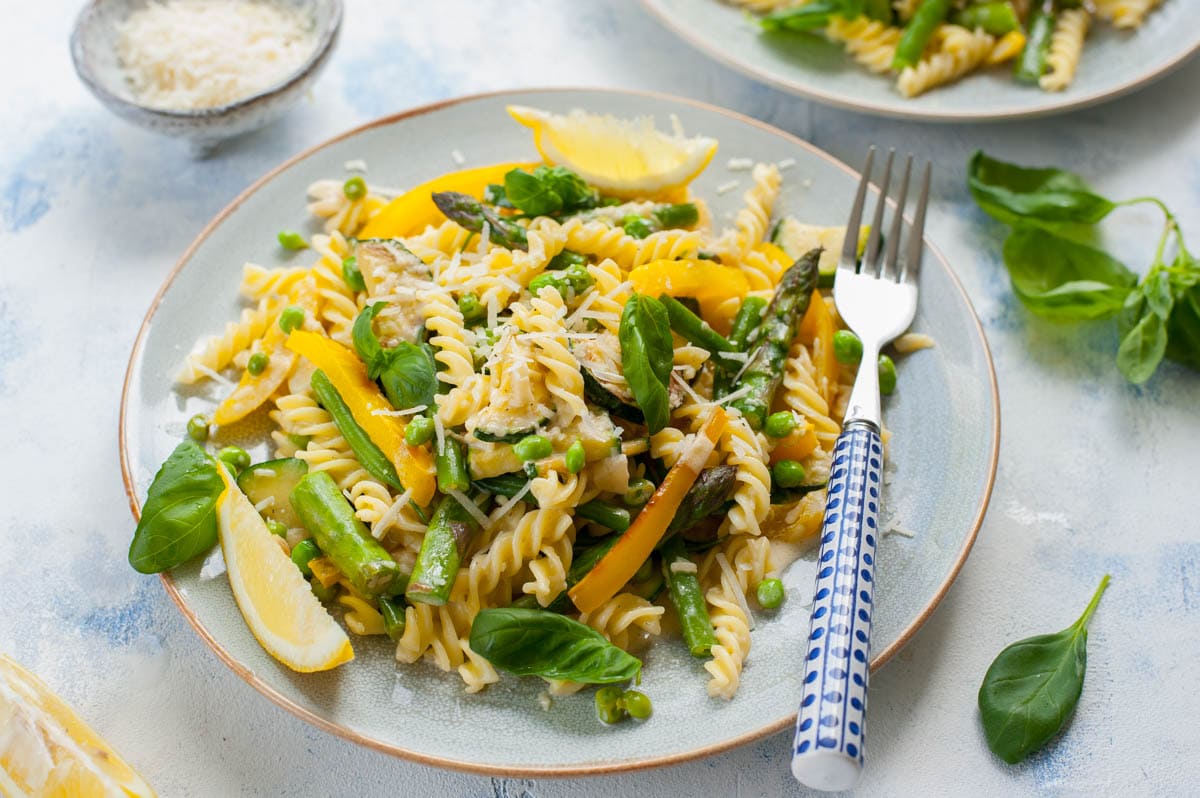
What is pasta primavera?
The name of this dish could implicate that this is an Italian pasta dish but it’s actually an American dish that consists of pasta, spring vegetables and creamy sauce. It was invented in the 1970s in New York by a chef Sirio Maccioni.
Why is it called pasta primavera?
Primavera means spring/springtime in Italian. The focus of dish dish is on fresh, spring vegetables that’s way this dish was called this way.
What is primavera sauce made of?
My primavera sauce recipe is made with heavy cream, broth, garlic, butter, lemon juice, and Parmesan cheese. This sauce is very similar to alfredo sauce but the main focus of this dish is on the vegetables and not on the sauce and pasta.
There are also other primavera sauce variations, like lightened sauce made with just butter, olive oil and Parmesan cheese.
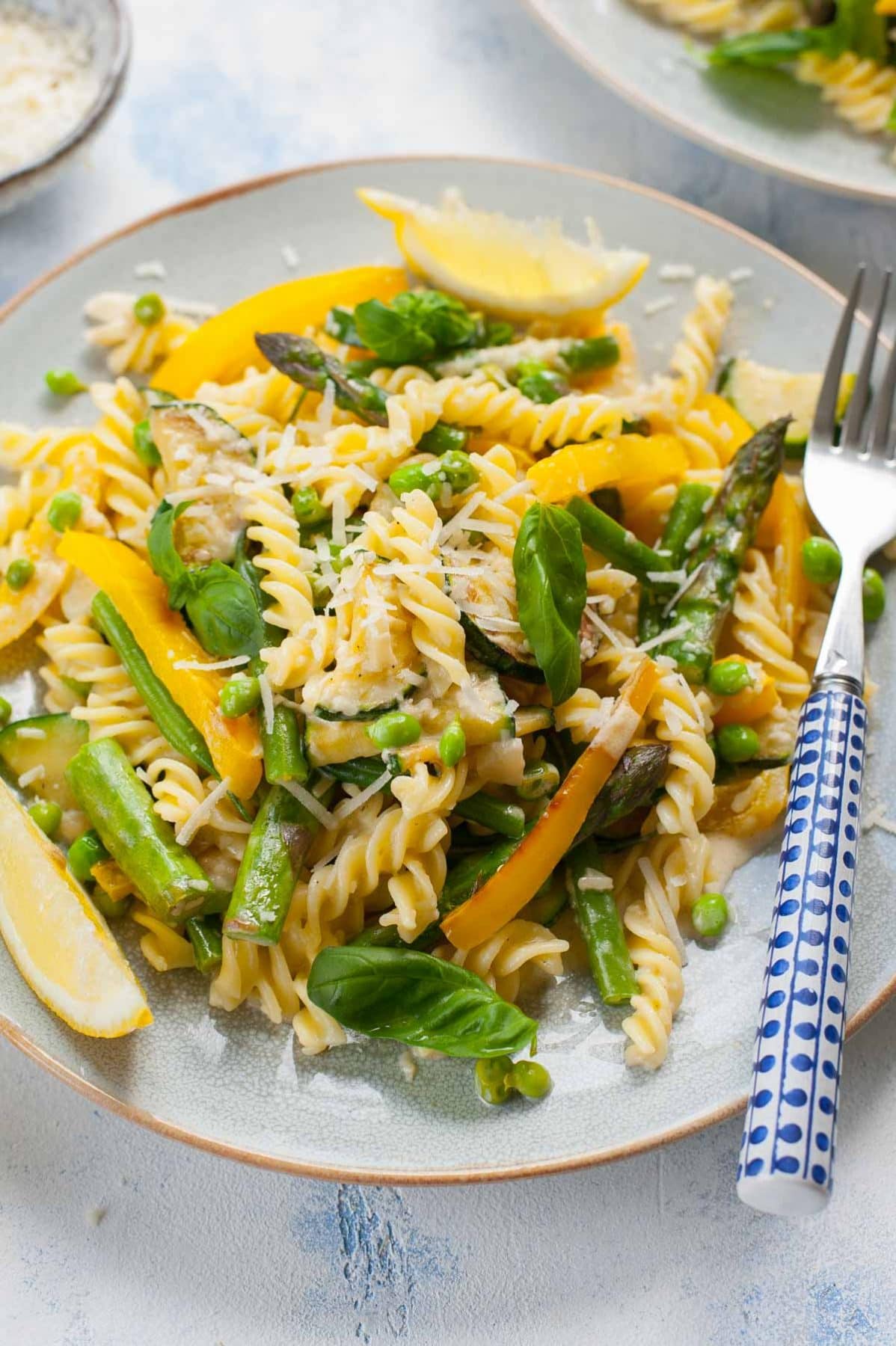
Ingredients / substitutions:
This dish is made with:
- Fresh spring vegetables. I used: asparagus, green beans, peas, bell pepper, and zucchini.
- Pasta – originally this dish was made with spaghetti pasta but I think bigger pasta is much better, it has a similar size to the vegetables. I used fusilli but penne would be also a good idea.
- Primavera sauce – is made with heavy cream, broth, Parmesan cheese, butter, and lemon juice.
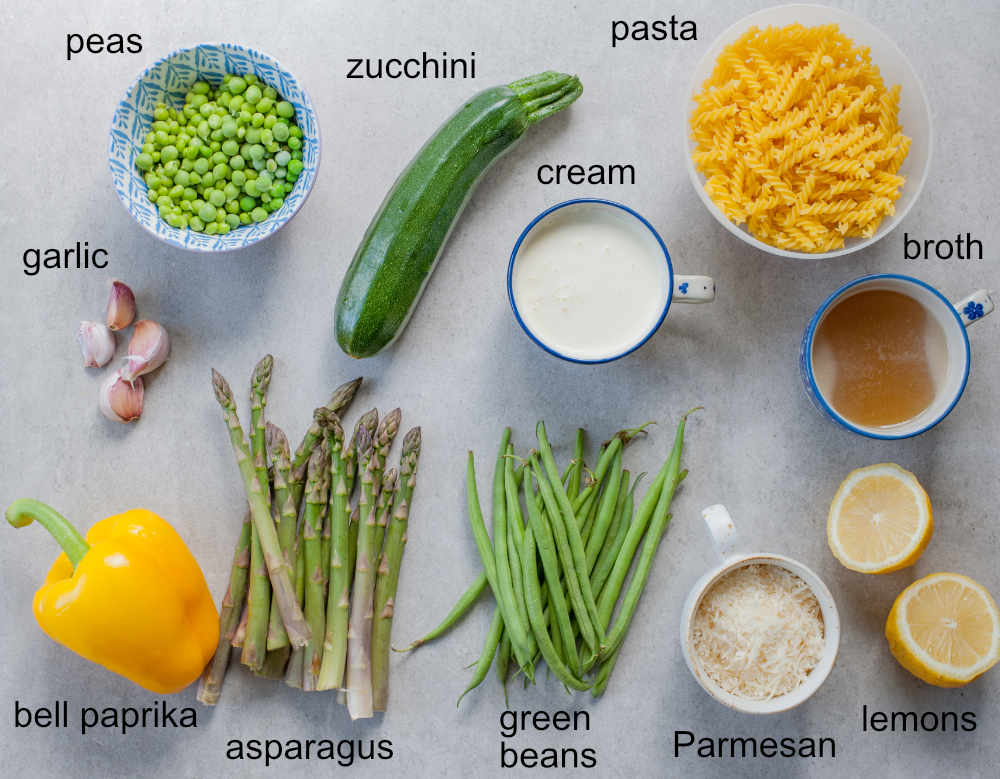
Make it your own:
- Add other vegetables: You can literally use any vegetables you have on hand. There are no hard rules here, the most important is that the vegetables are not overcooked and crunchy.
You could also use: tomatoes, broccoli, mushrooms, onion, spinach, carrots. All these vegetables would also work well. - You can add some protein, like smoked salmon, shrimp, pan-fried chicken/salmon, ground sausage, or turkey.
- Add some nuts, like flaked almonds or pine nuts. Toast them on a dry pan for extra flavor.
- Instead of lemon juice and zest, you can add a splash of dry white wine (but I prefer the version with the lemon juice and zest as it’s more bright and refreshing). You need to add lemon juice or white wine to add some acidity to the sauce, which would be otherwise too heavy.
- Instead of cream – add lots of olive oil and lemon juice.
- Another preparation method: instead of pan-frying the vegetables you can roast them in the oven at 450°F / 230°C for about 5-10 minutes.
Step-by-step instructions:
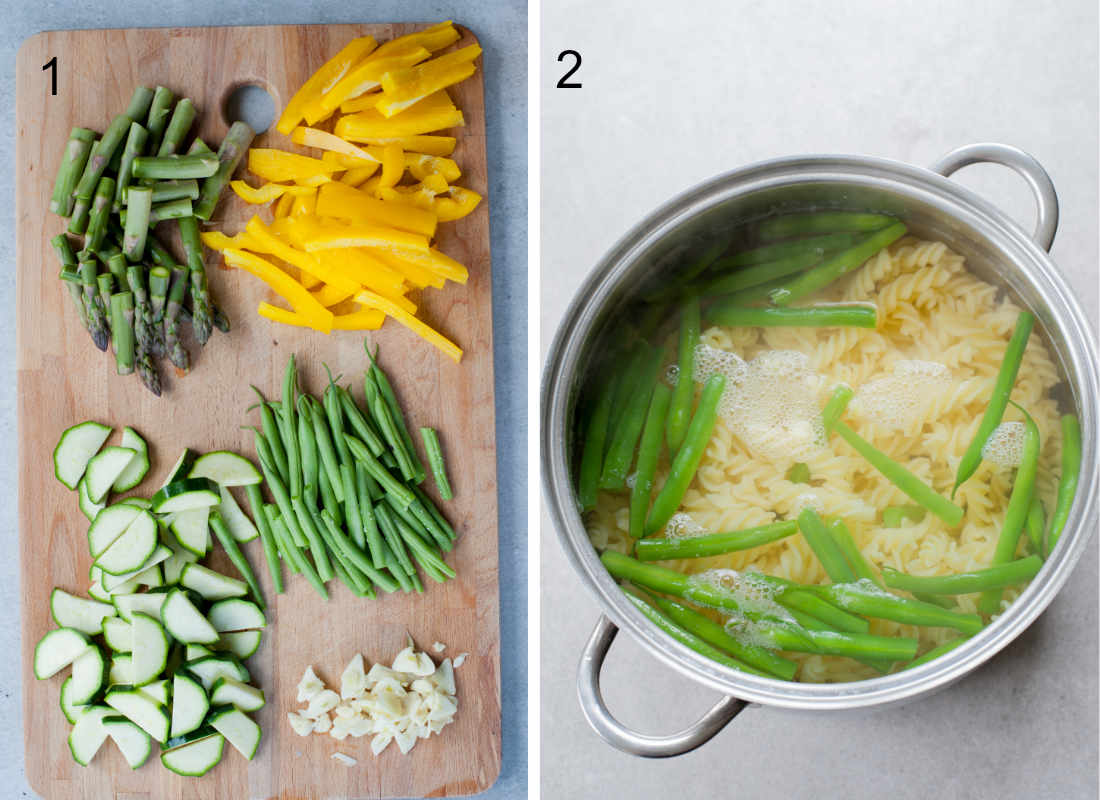
- Start with chopping all the vegetables: cut the zucchini into slices, bell pepper into strips, cut off woody ends of asparagus and cut it into 2-3 parts, cut the green beans in half, slice the garlic.
- Cook the green beans and pasta. I cook them in the same pot, cook the pasta according to the package instructions, thin green beans need about 4-5 mins cooking time, thicker beans about 5-6 minutes.
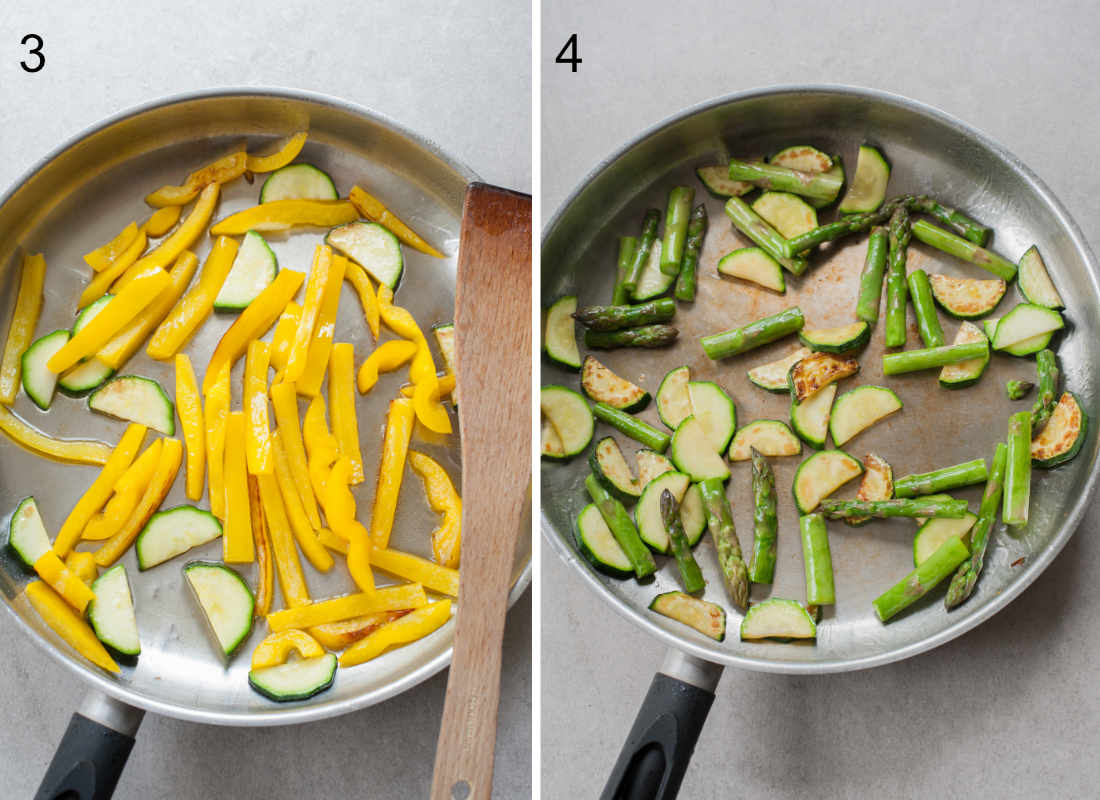
3. + 4. Now cook the vegetables. It’s best to cook them in batches, if they’re not overcrowded in a pan, they will brown nicely, which gives them lots of flavor. It’s very important that the vegetables are not overcooked, just cook them briefly until browned but still crunchy. Transfer them on a plate.
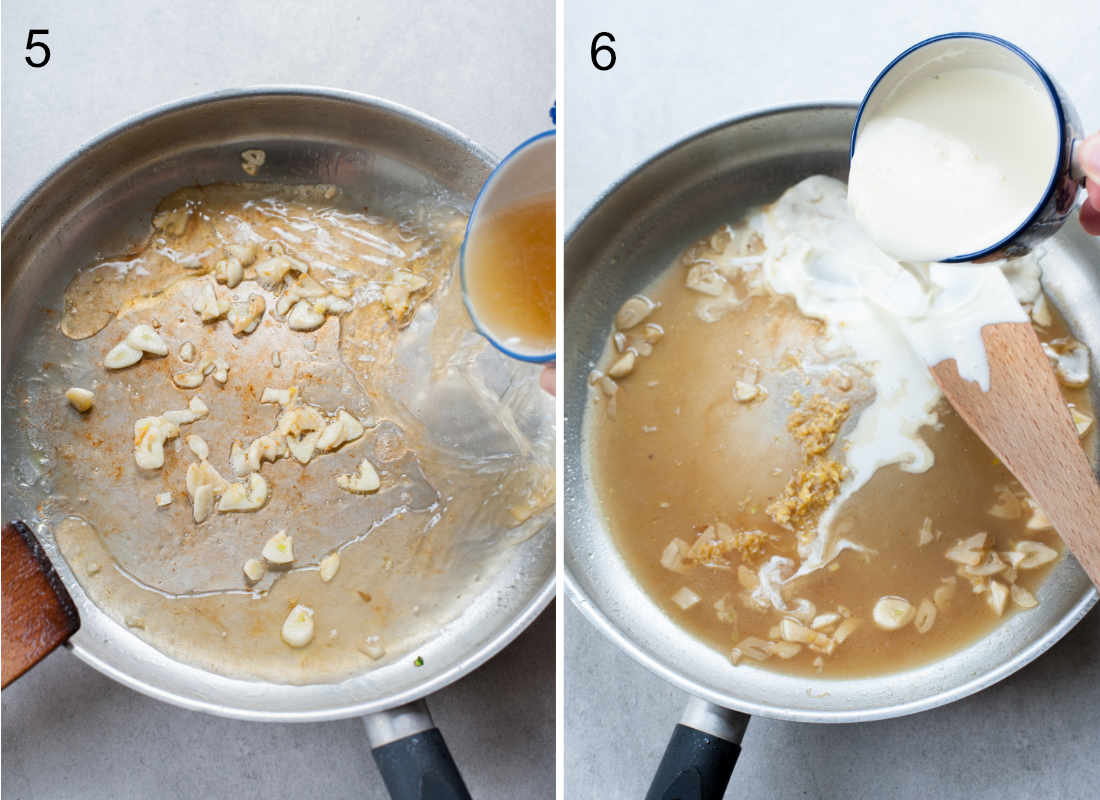
5. Add a tablespoon of butter to the pan and thinly sliced garlic. Cook for about 30 seconds, then add the broth. Make sure to scrape all the brown bits from cooking the vegetables that are at the bottom of the pan. Cook the broth for a couple of minutes, it should thicken a bit.
6. Add the cream and lemon zest, cook for a couple of minutes, it should slightly thicken. Season the sauce with lemon juice, salt and pepper.
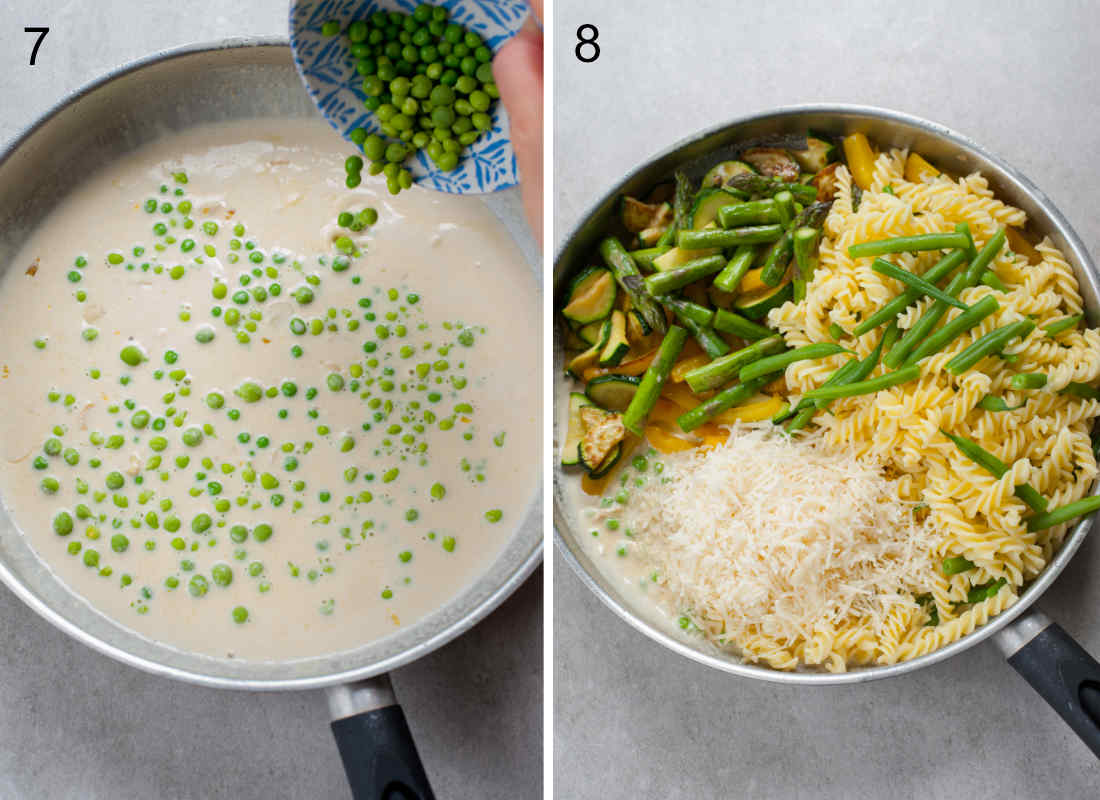
7. Cook the peas in the sauce. Fresh, small peas will need about 20 seconds, frozen peas about a minute.
8. Take the pan off the heat. Add all the other ingredients: cooked pasta and vegetables, Parmesan cheese. Stir everything together, add more salt and pepper if necessary.
Serve with more Parmesan cheese!
Enjoy!
Top tips for making this dish perfectly:
- Don’t overcook the vegetables – this is the most important tip for this recipe. The vegetables should be only lightly cooked, be still very firm and crunchy. Mushy, overcooked vegetables will ruin this dish.
- Don’t throw all the vegetables at once in the pan. When the vegetables are overcrowded on a pan they will stew instead of brown. Browning adds the vegetables extra flavor. That’s why we cook the vegetables in two batches.
- Don’t overcook the pasta – overcooked pasta will ruin any pasta dish! You need to cook the pasta al dente, which means it should not be soft but a little firm in the middle, it should have a bit of bite to it.
- Season it properly – that means lots of garlic and lemon juice. I intentionally haven’t added any additional spices to this pasta to let these simple flavors shine.
Storage and freezing:
You can simply store this pasta primavera in the fridge and reheat it the next day, but the best way would be to store the vegetables with the sauce separately from the pasta. The pasta will absorb the sauce and be mushy.
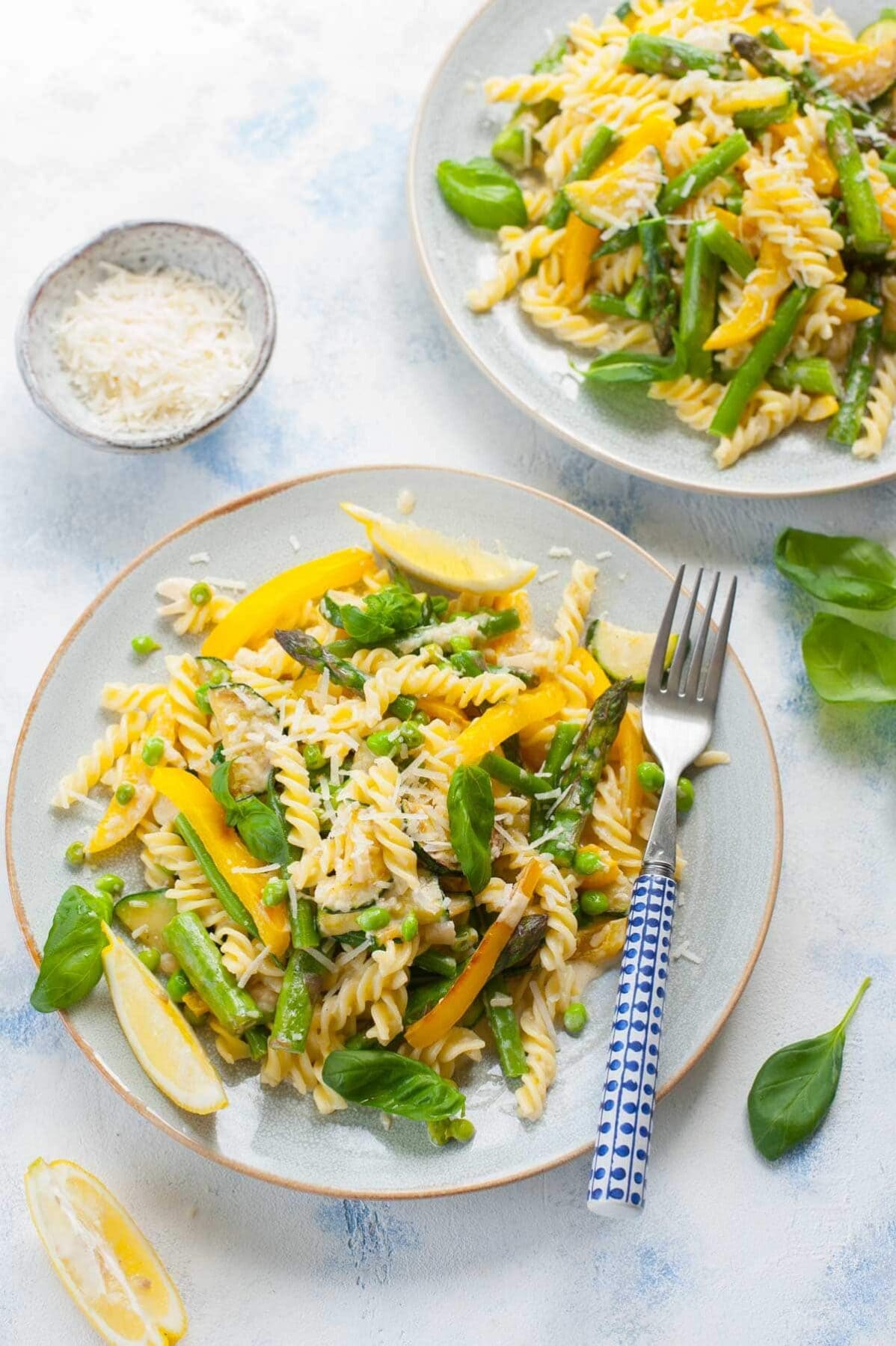
Other quick pasta dishes you may like:
- Shrimp pesto pasta with zucchini
- Pasta alla Norma – tomato and eggplant pasta recipe
- Chicken with cheese sauce and broccoli
- Tuna pasta with tomatoes and olives
- Bacon and pea pasta
Primavera pasta
Ingredients
- 6 oz (160g) pasta fusilli or penne
- 1.5 tablespoons frying oil
- 1 yellow bell pepper
- 1 medium zucchini
- 3.5 oz (100g) green beans a small handful
- 1/2 cup peas
- 1 tablespoon butter
- 4 large cloves garlic
- 1/2 cup chicken broth or vegetable broth
- 1 cup heavy cream 30-36%, 240 ml
- 2 tablespoons lemon juice
- 1/2 cup grated Parmesan cheese 2 oz/50g
- salt and pepper to taste
Would you like to save this?
Instructions
- Prepare all the vegetables: cut the bell pepper into 1/4-inch (1/2 cm) strips, zucchini into 1/3-inch (3/4 cm) half-slices, green beans in half crosswise, cut off the woody ends of asparagus (white parts) and cut the asparagus into 2-3 parts, cut the garlic into very thin slices.
- Cook the pasta al dente. 5 minutes before the end of the cooking, add the green beans (thin green beans need 4-5 minutes cooking time, thicker beans about 5-6 minutes). Strain the pasta and beans.
- Heat 1 tablespoon of oil in a large frying pan, add the bell pepper and half of the zucchini. Cook over high heat for about 2-3 minutes, or until the vegetables are slightly browned but still very crunchy (they cannot be very soft). Transfer the vegetables to a plate.
- Add half a tablespoon of oil and the other half of zucchini and asparagus to the pan. Cook it the same way as described above. Transfer the vegetables to a plate.
- Add a tablespoon of butter to the pan and when it's melted add the garlic. Cook for about 30 seconds.
- Add the broth, scrape all the browned bits from the bottom of the pan with a wooden spatula and cook over medium heat for about 3 minutes, or until the broth thickens a little.
- Add the cream and lemon zest. Cook for a few minutes until the sauce thickens slightly.
- Season the sauce with lemon juice (it should be very lemony).
- Add the peas and cook in the sauce for 30-60 seconds (fresh peas will need about 20 sec and the frozen peas about a minute).
- Add the grated Parmesan cheese, season the sauce with salt and pepper to taste. Take the pan off the heat.
- Add the cooked vegetables and pasta. Stir everything together, season with more salt and pepper if necessary.
- Serve with more grated Parmesan cheese and optionally fresh basil leaves.
- Enjoy!
Notes
- Add other vegetables: You can literally use any vegetables you have on hand. There are no hard rules here, the most important is that the vegetables are not overcooked and crunchy. You could also use: tomatoes, broccoli, mushrooms, onion, spinach, carrots. All these vegetables would also work well.
- You can add some protein, like smoked salmon, shrimp, pan-fried chicken/salmon, ground sausage, or turkey.
- Add some nuts, like flaked almonds or pine nuts. Toast them on a dry pan for extra flavor.
- Instead of lemon juice and zest, you can add a splash of dry white wine (but I prefer the version with the lemon juice and zest as it’s more bright and refreshing). You need to add lemon juice or white wine to add some acidity to the sauce, which would be otherwise too heavy.
- Instead of cream – add lots of olive oil and lemon juice.
- Another preparation method: instead of pan-frying the vegetables you can roast them in the oven at 450°F / 230°C for about 5-10 minutes.
- Storage: You can simply store this pasta in the fridge and reheat it the next day, but the best way would be to store the vegetables with the sauce separately from the pasta. The pasta will absorb the sauce and be mushy.
- Calories count = 1/3 of the recipe (1 serving). This is only an estimate!
Did you make this recipe? RATE THE RECIPE or tell me in the COMMENTS how you liked it! You can also add a photo of your dish. It would make me very happy and will help other readers. Thank you!!

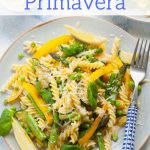
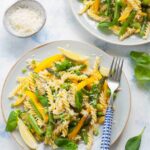
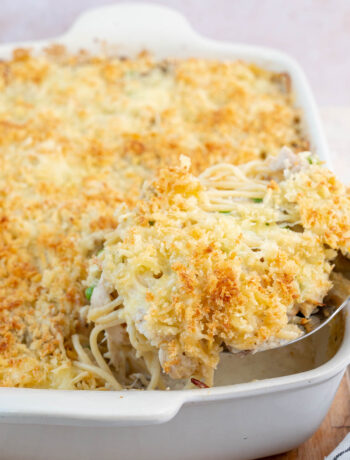
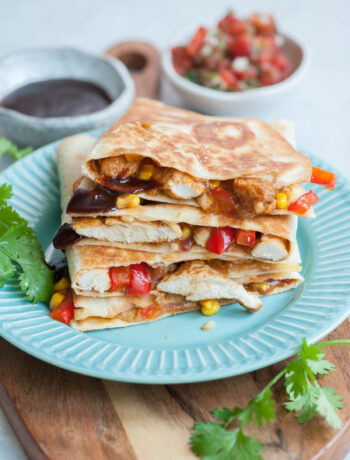
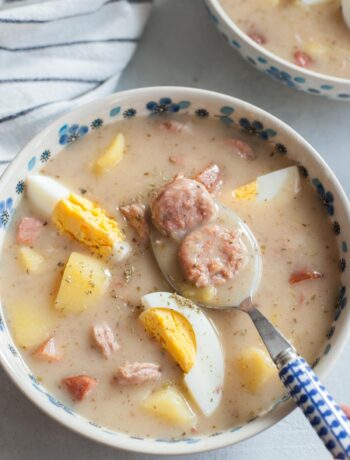
No Comments